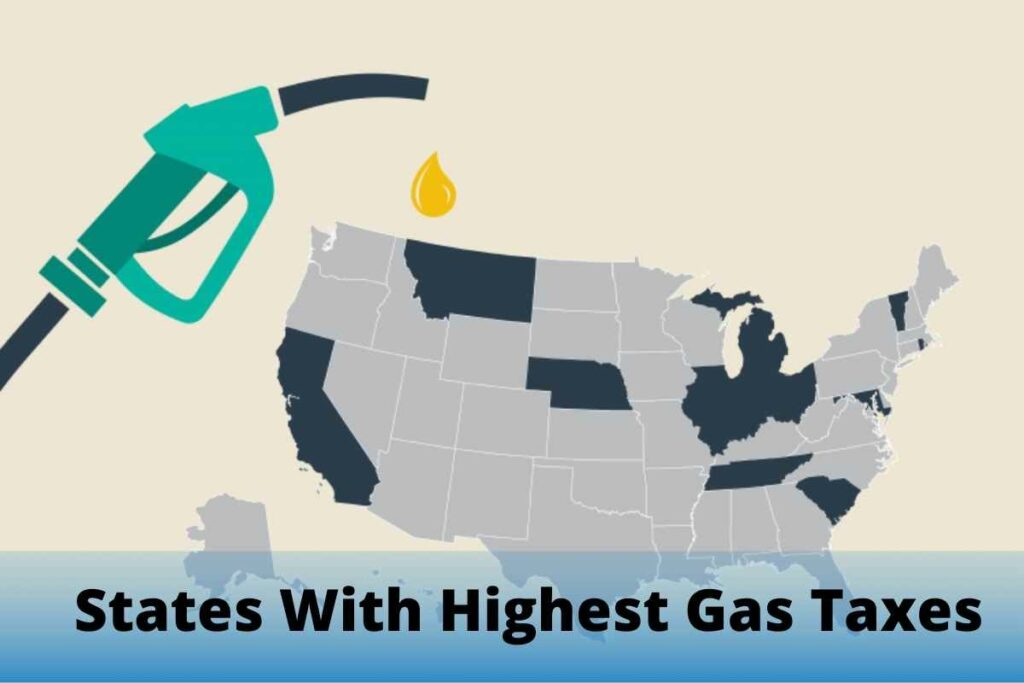In this section, added the detailed information regarding the Federal Tax, How much is Federal gas tax, and state-wise gas taxes, when the first gas tax was created, revenue generated by gas taxes.
The federal excise tax in the United States is 18.4 cents per gallon for gasoline and 24.4 cents for diesel fuel. Since its last rise on October 1, 1993, the federal tax has not been adjusted for inflation, which rose by 93% between 1993 and 2022. State and local taxes and levies currently contribute an average of 34.24 cents to gasoline and 35.89 cents to diesel per gallon in the US, for a total US volume-weighted average fuel tax of 52.64 cents for gas and 60.29 cents for diesel as of April 2019.
In this article, we conclude all related information about this topic, because people are looking for such type information that is why we are making this section. So, read the complete article till the end to know more.
Read More-
State Taxes
Oregon became the first US state to implement a fuel tax on February 25, 1919. 1/gal was the tax rate. All US states (48 at the time) and the District of Columbia adopted a fuel tax in the following ten years. In many states by 1939, the average fuel tax was 1/L or 3.8/gal.
State gas taxes have undergone numerous modifications since they were first introduced. Even though a large number of fuel taxes were initially reviewed as a fixed amount of cents per gallon, as of 2016, 19 states and the District of Columbia have fuel taxes with rates that fluctuate in accordance with changes in the cost of fuel, the rate of increase, the fuel economy of vehicles, or other factors.
The American Petroleum Institute calculates the average tax for the entire state by weighing local taxes by the population of each municipality. The amount of fuel sold in each state affects how much the national average is weighted. More states have below-average taxes than above-average taxes since many of the states with the highest taxes also have higher populations.
A lot of states waive general sales taxes on fuel. However, in addition to the excise tax, several states also charge full or part-time sales taxes.
Right now, the federal government charges an 18 cent tax per gallon of gasoline and a 24 cent tax per gallon of diesel.
@POTUS is calling on Congress to suspend the gas tax for three months and provide families immediate relief at the pump.— The White House (@WhiteHouse) June 22, 2022
When Gas Tax Created?
The Revenue Act of 1932, which imposed a 1/gal (0.3/L) tax, was implemented on June 6, 1932, establishing the first federal gasoline tax in the United States. The federal fuel tax in the US has been constant since 1993 at 18.4 cents per gallon (4.86 cents per liter), with no adjustments made for inflation, which ranged from 68 to 77 percent through 2016. Unlike the most other products sold in the US, all taxes are included in the listed price rather than being added at the time of purchase that is as opposed to the prices of goods, for example, many stores advertised on shelves without tax which is instead calculated at checkout by many vendors.
On August 15, 2007, Mary Peters, who was then the secretary of transportation, said that roughly 60% of federal gas taxes go toward building roads and bridges. The remaining 40% is allocated to specified schemes, some of which are minor mass transit initiatives. However, federal transportation programs also use revenue from other taxes.
Revenue Collection Through Gas Tax
In the 2016 fiscal year, federal fuel taxes generated $36.4 billion, of which $26.1 billion came from gasoline taxes and $10.3 billion from taxes on diesel and special fuels. The tax is not inflation-indexed and was last increased in 1993. Depending on the source, there was 68 percent or as much as 77 percent overall inflation from 1993 to 2017.
Which U.S. State Has the Highest Gas Tax?
California had the highest gas tax in the US as of June 2022, at 58.8 cents per gallon. Pennsylvania, with a price of 58.7 cents per gallon, is not far behind. On July 1, 2022, the state of California was supposed to raise its gas tax by 2.8 cents per gallon.

How Much Tax On Aviation Gas?
Gasoline for aircraft carries a $0.194 per gallon tax. Gasoline is furthermore subject to a $0.141 per gallon surtax when used in an aircraft participating in a fractional ownership program.
Kerosene is typically taxed at $0.244 per gallon unless a lower rate is in effect. The tax rate is $0.219 for kerosene that is transferred directly from an on-airport terminal into the fuel tank of an aircraft for use in noncommercial flying.
Notably, for this tariff to be valid, the airport terminal does not have to be a passenger-carrying, secured airport terminal. However, the refueling truck, tanker, or tank wagon must adhere to the guidelines described in the section below on certain terminal-classified refueler vehicles, tankers, and tank wagons.
The Federal Aviation Administration (FAA), which is mostly used by commercial aviation, receives funding from these taxes primarily for airport and air traffic control operations.
Where Does Gas Tax Revenue Go?
The most of gas tax money is used to fund infrastructure initiatives like the construction, maintenance, and modernization of roads and public transportation.
Which U.S. State Has the Lowest Gas Tax?
Alaska has the lowest state gas tax by a significant margin, at 8.95 cents per gallon. Since 1970, when it was 8 cents a gallon, the state’s gas tax has barely changed.
We hope you have found the right information in this section, if you need more information related to how much is federal gas tax and much more then stay tuned with us.




